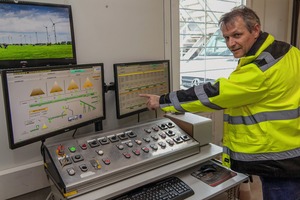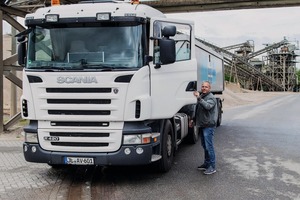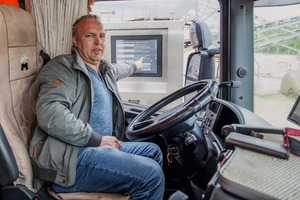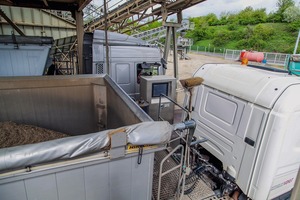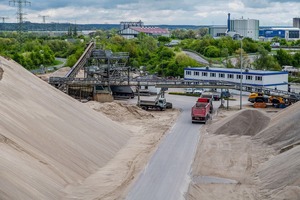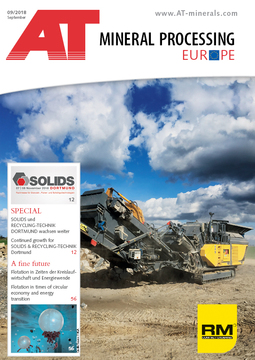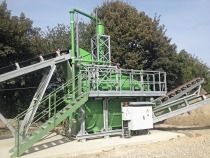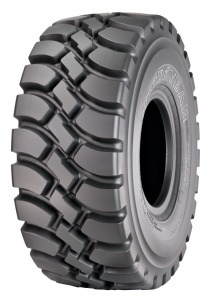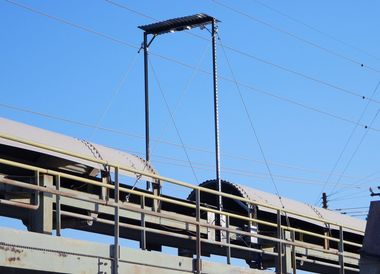New software and terminals facilitate the job
“We wanted a new IT system to run our loading facility, which should be technically up-to-date and easily to adapt to versatile requirements, even if such requirements do not yet have to be fulfilled and can therefore not be described in detail.”
So far, the company has worked with an IT solution that was introduced more than 20 years ago, and which, from today‘s point of view, is far from being comfortable and can hardly be updated, Dr.-Ing. Claus Heidecke, Managing Director of the Kies- und Baustoffwerke GmbH & Co. Kg from Barleben explains the background of the new investment. The Kies- und Baustoffwerke Barleben, a family-run business with a century-old tradition of extraction, processing and marketing of gravel and sand, belong to the Hülskens Holding with its headquarter in Wesel.
About 1.1 to 1.5 million t of sand and gravel are processed by wet extraction in three open-cast mines which belong to the Kies- und Baustoffwerke Barleben. The output is almost completely marketed on a local basis.
Within the context of his inquiries regarding the new loading system, Dr. Heideck came across the PRAXIS EDV-Betriebswirtschaft- und Software-Entwicklung AG from Pferdingsleben based in Thuringia. They offered the “WDV 2017”, an efficient and business-scale solution which, when fully used, covers tendering process, scales, sales tasks, offers, orders as well as the efficient controlling. “Since in our Holding, we work with a well-established, comprehensive and inter-group standard software package, we only leverage a part of the WDV software.” Thus, following the installation, one of the first measures taken by the PRAXIS EDV was to build an interface which enabled the smooth exchange of data with the existing SAP system, explains Dr. Heidecke.
The big difference in comparison to other suppliers is the support the PRAXIS EDV provides for all products. Apart from individual software adaptations to the operational practice in Barleben, continuous updates of standards and regulations will be carried out. Another very important feature is the ability to completely document the recorded and processed data of the loading system, as it is required by the tax authorities, for example. This feature was also confirmed in various certificates provided by official entities. In addition, comprehensive and well thought-out training courses are offered, which are readily accepted by the employees.
The actual changeover as well as the practical implementation worked out “very well”. “The transition ran smoothly so there wasn‘t any break,” Dr. Heidecke gladly summarized the procedure. In order to secure the years to come to the greatest possible extent, they bought a multiannual full-service package including all updates and adaptations.
The lorry drivers‘ operation routine remains basically the same – an important factor for the fast adoption of the new system. “Each driver has his own chip card to identify himself and login via a scanner from inside the vehicle. Using the menu on the touchscreen, he can independently determine kind and quantity of his load”, explains Andreas Voigt, who, with his transport business and building materials trade, has been delivering gravel and sand to contract customers on behalf of the company since 1998. For all sand-gravel mixtures desired by the customers, the formulations are saved in files, which can be immediately retrieved. Having determined the empty vehicle weight, the system identifies the permissible total tonnage while the loading process can be tracked via display. After about four minutes, vehicle loading is completed and the driver will receive the number of delivery notes, individually requested by the customer, from an access flap of the printer terminal at the exit of the loading area.“Previously, the delivery note signed by the transport company had to be returned to the gravel plant. This is no longer necessary, since now everything is digitally managed,” Voigt gladly explains the minimum effort required.
The aim of implementing the system has not been improved cost efficiency, but the guiding principle was and is the changeover to a future-proof loading system with excellent and reliable support along with the possibility to integrate and centrally manage further locations.
“We would take exactly the same decision again,” is the conclusion of Dr Heidecke after ten months of regular operation and an introductory and test phase of six weeks. The company is already considering the system‘s introduction in another gravel plant.
//www.praxis-edv.de" target="_blank" >www.praxis-edv.de:www.praxis-edv.de

